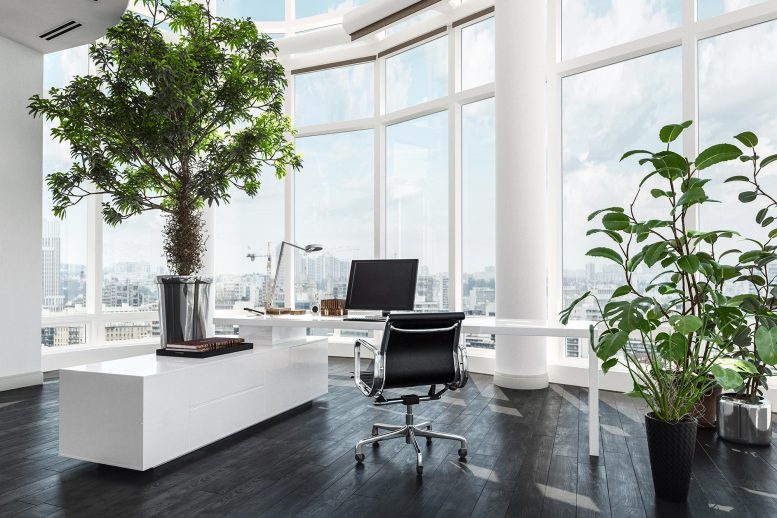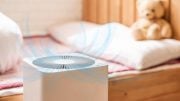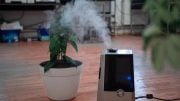
Plants can help spruce up a home or office space, but claims about their ability to improve the air quality are vastly overstated, according to research out of Drexel University. A closer look at decades of research suggesting that potted plants can improve the air in homes and offices reveals that natural ventilation far outpaces plants when it comes to cleaning the air.
“This has been a common misconception for some time. Plants are great, but they don’t actually clean indoor air quickly enough to have an effect on the air quality of your home or office environment,” said Michael Waring, Ph.D., an associate professor of architectural and environmental engineering in Drexel’s College of Engineering.
Waring and one of his doctoral students, Bryan Cummings, reviewed a dozen studies, spanning 30 years of research, to draw their conclusions and published findings today (November 6, 2019) in the Journal of Exposure Science and Environmental Epidemiology. The central finding is that the natural or ventilation air exchange rates in indoor environments, like homes and offices, dilutes concentrations of volatile organic compounds — the air pollution that plants are allegedly cleaning — much faster than plants can extract them from the air.
The high-profile experiment that seemed to create the myth of houseplants as air purifiers happened in 1989 when NASA, in search of ways to clean the air on space stations, declared that plants could be used to remove cancer-causing chemicals from the air.
But the problem with this experiment, and others like it, is that they were conducted in a sealed chamber in a lab — a contained environment that has little in common with a house or office — and the data from these studies was not interpreted further to reflect what the findings would be if the plant were in a real indoor environment with natural or ventilation air exchange.
“Typical for these studies,” the researchers write, “a potted plant was placed in a sealed chamber (often with a volume of a cubic meter or smaller), into which a single VOC was injected, and its decay was tracked over the course of many hours or days.”
Waring and Cummings’s review takes the data from volumes of potted plant research one step further, by using it to calculate a measure called the “clean air delivery rate,” or “CADR.” They were able to make this calculation for nearly all of the studies and what they found in every case was that the rate at which plants dissipated VOCs in a chamber was orders of magnitude slower than the standard rate of air exchange in a building — thus proving the plants’ overall effect on indoor air quality to be irrelevant.
“The CADR is the standard metric used for the scientific study of the impacts of air purifiers on indoor environments, but many of the researchers conducting these studies were not looking at them from an environmental engineering perspective and did not understand how building air exchange rates interplay with the plants to affect indoor air quality,” Waring said.
Many of these studies did show a reduction in the concentration of volatile organic compounds over time, which is likely why people have seized on them to extol the air-purifying virtues of plants. But according to Waring and Cummings’s calculations, it would take between 10 and 1,000 plants per square meter (10.8 square feet) of floor space to compete with the air cleaning capacity of a building’s air handling system or even just a couple of open windows in a house.
“This is certainly an example of how scientific findings can be misleading or misinterpreted over time,” Waring said. “But it’s also a great example of how scientific research should continually reexamine and question findings to get closer to the ground truth of understanding what’s actually happening around us.”
Reference: “Potted plants do not improve indoor air quality: a review and analysis of reported VOC removal efficiencies” by Bryan E. Cummings and Michael, S. Waring, 6 November 2019, Journal of Exposure Science & Environmental Epidemiology.
DOI: 10.1038/s41370-019-0175-9









Yes, but plants don’t create draughts!
Isro
Chandaryaan2 3D images https://www.sarthtya.tech/2019/11/chandaryaan2-chandaryaan2-send-their.html?m=1
So I just read an article saying plants indoors can remove 97% of cancer causing particles in 8 hours or less and are highly effective at it. Then below that article is a link to this one saying they aren’t good at cleaning indoor air. So which is it?
2 TOTALLY CONFLICTING ARTICLES ABOUT PLANTS. 1 SAID 97% CLEAN AIR FROM PLANTS, SECOND ARTICLE STATES DOES NOT HELP THE AIR QUALITY AT ALL?? WHICH IS IT??